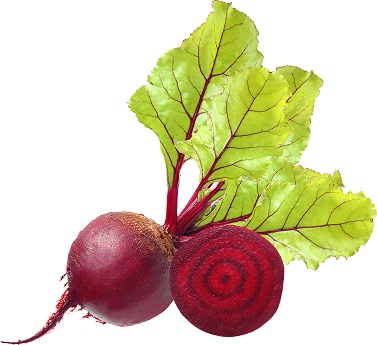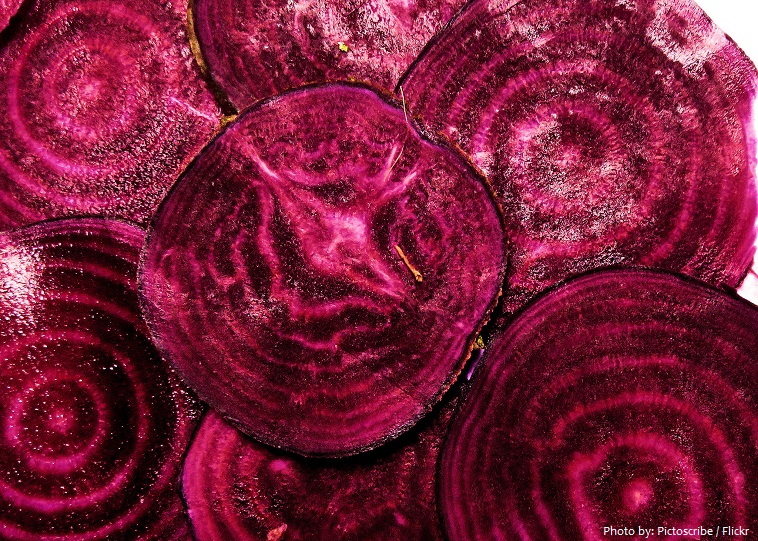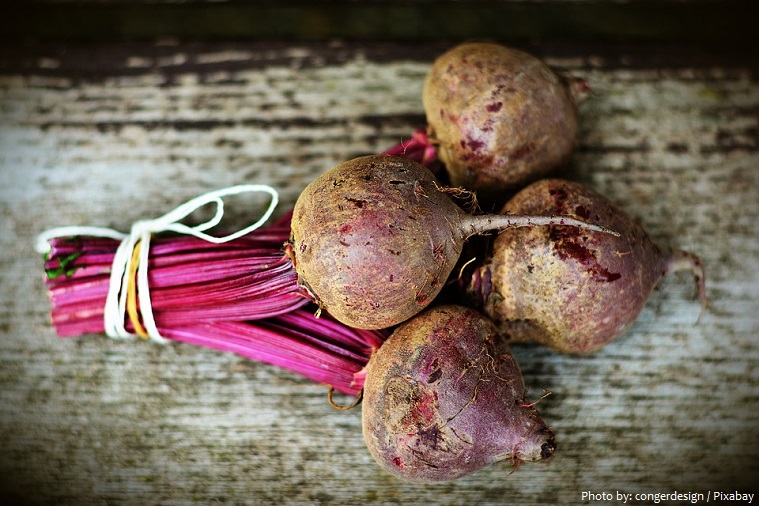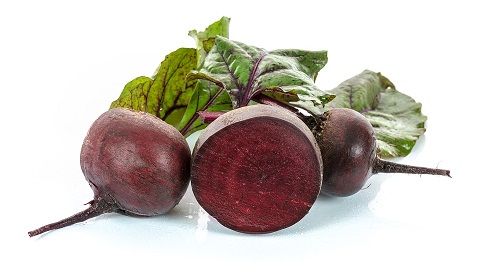Beet is a vegetable and a natural “superfood” that offers powerful health and nutritional benefits.
It is one of several of the cultivated varieties of Beta vulgaris grown for their edible taproots and their leaves (called beet greens).
Beta is the ancient Latin name for beets, possibly of Celtic origin, becoming bete in Old English around 1400.
There 10 species in the Beta genus and all also have the common name beet, although Beta vulgaris is the most well-known and commercially important and is known as the common beet.
They are said to have grown in the Hanging Gardens of Babylon. The Elizabethans enjoyed them in tarts and stews. Thomas Jefferson planted them at Monticello. Medieval cooks stuffed them into pies.
Beets are most extensively grown in temperate to cool regions or during the cooler seasons. The growing season varies from 8 to 10 weeks for garden beets in favourable climates to 30 weeks for some mangel-wurzels.
Beets of all varieties typically grow in a basal rosette, then with alternate leaves on flowering stems, which can grow to 1.25 meters (4 feet) in the biennial sugarbeet varieties, but are typically 0.5 to 0.75 meters (1.5 to 2.5 feet) in Swiss chard and beetroot.
The flowers are typically small, greenish to yellow, growing in small clusters on slender spikes, with a 5-parted calyx that lacks petals. The fruit often develops from aggregates of two or more flowers joined at their bases, and forms a small, spiny or hard, irregularly shaped “seed” with a woody calyx.
The leaf, leaf stalks, and roots of beet plants are edible. The leaves are high in vitamin A and minerals including calcium, iron, potassium, and magnesium.
Although beets have the highest sugar content of all vegetables, most people can safely eat beet roots a few times a week (and their greens in unlimited quantities), enjoying not only their sweet, earthy flavor but also their powerhouse nutrients that may improve your health in the following ways.
The blood-red color of beets comes from a powerful group of antioxidants called betalains. There are hundreds of studies on the positive health benefits of betalains.
Betanin and vulgaxanthin are betalains that have gotten special attention in beet research. Beets are also an excellent source of folate and a very good source of manganese, potassium and copper. They are also a good source of dietary fiber, magnesium, phosphorus, vitamin C, iron and vitamin B6.
There are 43 calories in 100 grams (3.5 ounces) of beets.
Raw beetroot is 88% water, 10% carbohydrates, 2% protein, and less than 1% fat.
From the Middle Ages, beetroot was used as a treatment for a variety of conditions, especially illnesses relating to digestion and the blood.
The health benefits of beets include its ability to lower blood pressure, prevent cancer, cleanse the liver, treat anemia, increase stamina, and boost libido. They also prevent macular degeneration, improve blood circulation, aid in skin care, prevent cataract, build immunity, and treat respiratory problems. These benefits of beetroots can be attributed to their richness in nutrients, vitamins, and minerals.
Beetroot can be boiled or steamed, peeled and then eaten warm with or without butter as a delicacy; cooked, pickled, and then eaten cold as a condiment; or peeled, shredded raw, and then eaten as a salad. Pickled beets are a traditional food in many countries.
Some love their naturally sweet and earthy flavor while others loathe them in just about any form — even beet juice.
Raw beet juice is one of the most powerful ways you can consume it. It is rather intense by itself, though, and tastes much better mixed with fruits and other vegetables.
Betanin, obtained from the roots, is used industrially as red food colorant, to improve the color and flavor of tomato paste, sauces, desserts, jams and jellies, ice cream, candy, and breakfast cereals, among other applications.





